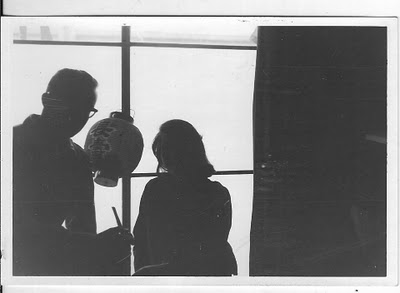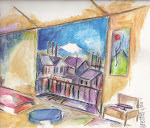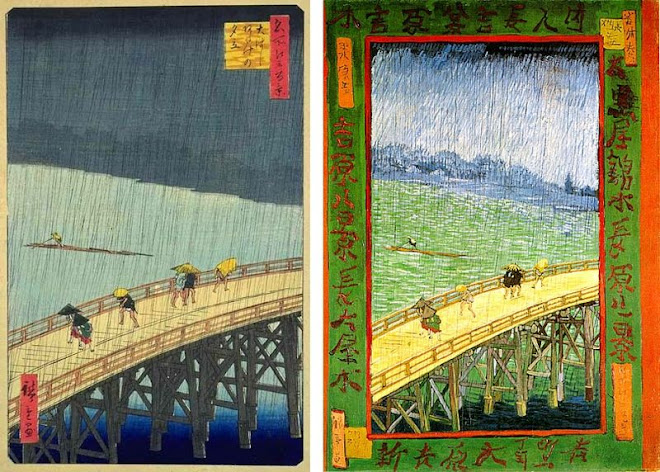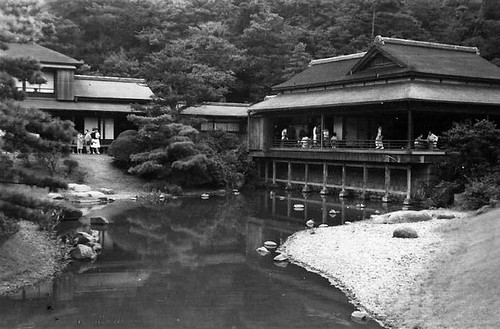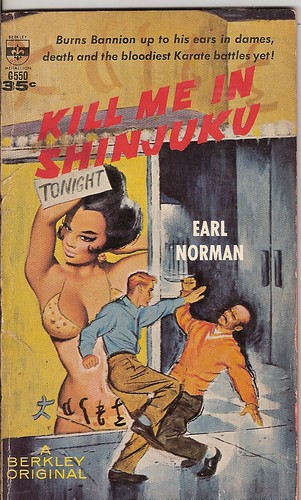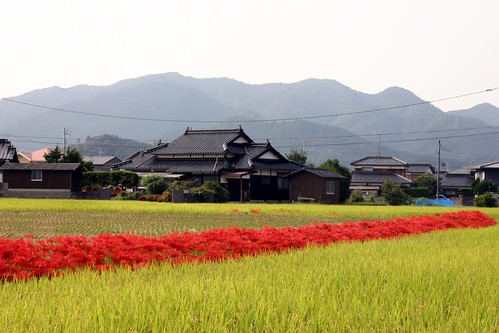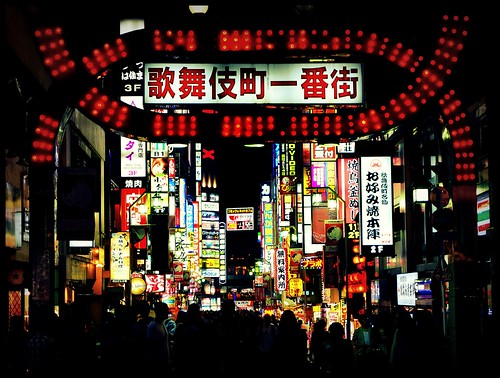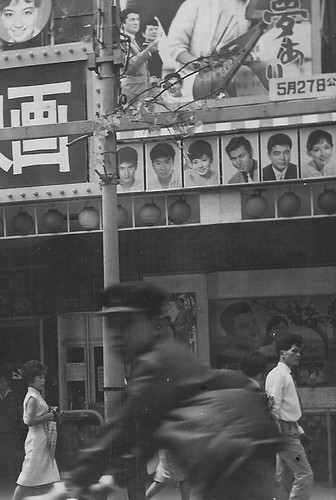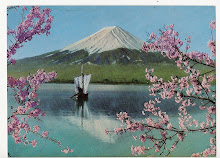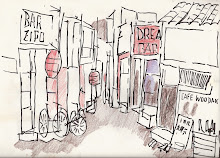One of the best photographs of Mt. Fuji I have ever seen. The last time I saw Mt. Fuji was in December of 1963, just prior to saying sayonara. Of course, at that time, there were very few skyscrapers, if any. It was a period of reconstruction, thus few building like these were built. RLH Editor
___________________________________
THANKS TO OWENFINN16 for permission to add this great photo to my blog.
YOKOHAMA PICTURE SHOW

Shot with my Petri in Yokohama 1962
RICE FIELD IN JAPAN 1962

I took this with my PETRI in Kanagawa Prefecture
Saturday, December 31, 2011
Untitled
Friday, December 30, 2011
Sankien Gardens, Yokohama 1961 by R.L.Huffstutter
It was the first park I visited in Japan. It was also the destination for a first date. The park is very special to my memories
__________________________________
This work is licensed under a Creative Commons Attribution 2.0 Generic License.
__________________________________
This applies to all material that I have created, photos, art, etc
Tuesday, December 27, 2011
I NEVER FOUND IT THIS DANGEROUS, REALLY...
LOST IN THE DARKEST PART OF TOKYO
Earl Norman had quite an imagination. There was never a time during my tour when I encountered any scenes of this nature, thankfully.
I recall getting lost in the back streets of Tokyo during the first few months of my tour. It was in the spring of 1962.
I was near a canal; it was very dark and there was not a taxi anywhere. I kept walking, not fearful at first until my mind began tormenting me.
I was walking softly, listening to sounds I could not identify, no voices, nothing. I kept walking. I was in an industrial area, a reconstruction area. Suddenly, as I was crossing a small bridge over a canal, I heard the sound of an outboard motor. I leaned over the railing and watched the small boat get underway without lights.
I listened as the motor faded. How did I lose myself from the streets where the nightlife never ended. I must have been in a daze. My mind kept tormenting me as I recalled how I had gotten lost one night in Los Angeles in 1960.
But I was in Tokyo. In a few moments, I saw what appeared to be a red lantern glowing outside a row of buildings. I walked in and was greeted heartily by friendly faces, men twice my age. After several complimentary drinks of sake, a cab pulled up outside and the men smiled, laughed heartily and told the driver to take me to the Ginza.
At the moment, I never thought about what the men had been doing only a few years short of two decades in their past.
By Robert L. Huffstutter
fire
DEFINING THE BEAUTY OF PHOTOGRAPHY IN JAPAN...a photo by Timothy Takemoto. Follow the link and view a most unique Flickr photostream.
Saturday, December 24, 2011
The Chrysanthemum and the Sword
It is my beief that no Westerner is able to define the Japanese culture accurately. While what many Westerners write might sound authentic, even to some Japanese, it is only the Japanese who are able to understand "Japanese character."
During World War Two, the definition of the Japanese was easy to define, especially in propagana, however, once the Treaty of Peace was signed in San Francisco in 1952, Japan's transformation became a national miracle in that the entire nation of Japan succeeded in terms of its economy like no other nation on earth had ever succeeded. When one looks at the ruins of Japan in 1945 and the nation as it is today, there is no Westerner capable of explaining how the Japanese transformed those ruins into one of the world's most brilliant economic powers on earth. By Robert L. Huffstutter
__________________________________
The Chrysanthemum and the Sword by timtak
Thursday, December 22, 2011
Neon Floods
Wow...how I wish I was here. What a great photo. This is perfection. This photo might make me call JAP and make reservations. If ever I have seen a photo that would make a great TRAVEL POSTER, this is the one I would select for Japan.
__________________________________
EKA RADITYA ROOSHARTANTO PHOTO
Copyrighted
YOUNG LAD IN SCHOOL UNIFORM ON BIKE 1961
YOUNG LAD IN SCHOOL UNIFORM ON BIKE 1961
This is one of my best shots with my Petri. Young student zooms by at the perfect moment and makes this photo a special image. Yokohama 1961, by R.L.Huffstutter
Tuesday, December 20, 2011
566px-Sailor-fuku_for_winter
MAKING FRIENDS WITH JAPANESE STUDENTS IN 1961 AND 1962 By Robert L. Huffstutter
Upon seeing the students in uniforms, many of the Americans who had just arrived in Japan were confused and some worried that the nation was getting ready to militarize again.
However, upon seeing the beautiful young ladies of high school age, they soon realized the uniforms were for academic purposes. I recall my first trip to Yokohama. I took a sketch book and a few pencils and made my way toward the harbor. I always loved harbors, thus seeing Yokohama was a high priority. Helpful young students guided me to what became a favorite place, Yamashita Park. As I sketched, dozens of young lads in dark blue uniforms, many with hats, gathered around. Their smiles and polite attitudes assured me they were somewhat fascinated by seeing a single American sketching the harbor. Very soon, they were asking me questions in English, much to my surprise, and we enjoyed a pleasant conversation, though not fluent, very understandable. It was a pleasant introduction to a nation I remembered as one of fierce warriors when I was still in grade school. Naturally, movies like "Sands of Iwo Jima" came to mind, but those images were transformed very early into something completely different, a peaceful and friendly mass of polite people. When I noticed the young women in their late teens in school uniforms, I could not help but marvel at their natural beauty.
At the time, I did not notice the absence of men twenty to thirty years my senior, men who were old enough to have been my father's age. Thus, the majority of the Japanese I met throughout my tour were mostly my age, younger or older, but now I realize they were those men who were fortunate to have escaped conscription as the peace was made in 1945.
Most of those men, a generation older than myself, were not scholars but busily employed in the reconstruction of their nation. They were the men who were in construction, the men buillding the concrete forms from bamboo, the men drilling into old concrete, and those who were running new electrical lines below and above ground.
Amongst this diverse nation were groups of male and female students going about, laughing and in seemingly good moods, in school uniforms. I grew to enjoy their presence around me wherever I wandered during the daylight hours. Many of the students in school uniforms were in their late teens. It was not unusual to see these students in some of the coffee and wine shops that were so common around the different areas of Yokohama.
__________________________________
566px-Sailor-fuku_for_winter by roberthuffstutter
Friday, December 16, 2011
USS GENERAL W.A. MANN AP-112,sailing from Yokosuka to San Francisco
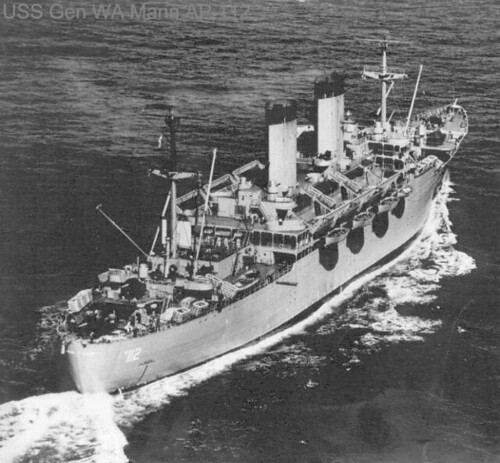
USS GENERAL W.A. MANN AP-112,sailing from Yokosuka to San Francisco, a photo by roberthuffstutter on Flickr.
SAYONARA, A TIME THAT I CANNOT FORGET...
It was a cloudy morning on the day in December of 1963 when I said goodbye and boarded this huge transport, USS GENERAL MANN, for the journey home. It was a day I will not forget.
The vessel arrived in San Francisco ten days later on my 22nd birthday. As all of us might have a tendency to do, this is one of the time frames I use when remembering certain seasons of my lifetime.
Perhaps there are those who do not store memories in compartments and open them by simply recalling the month and year we might want to remember either for a few moments or for hours of entertainment and reflection.
I did not go straight to the train station or airport, I flagged a cab and found a cheap hotel downtown and spent the next three days unwinding with Canadian Club. When I became bored with my own company, I found nearby bars to frequent. Conversation was cheap and entertaining. It was then that I began writing my poetry again, in spiral notebooks and on bar napkins.
Sure, it was good to be back in the USA, but the emotion of returning did not compare with the emotions I experienced from leaving Japan.
Leaving a joyful lifestyle where there was love and a lifestyle I enjoyed to return to a land of strangers where the lifestyle was indifferent to my values created an immediate state of despondency, one that has remained, more or less, throughout the ages.
Time is of no consequence; time does not heal sorrows. When one day is gone, it is gone in an instant and does not matter if it has been gone for only 24 hours or decades; it is no respecter of persons and their emotions. Time is not a sentimental element; time has no energy or mercy--it is immune to the suffering of one individual or generations.
Time and emotions are as distant from the other as is life from death.
The above is from a passage in a novel I am writing, AN AMERICAN WANDERING.
By Robert L. Huffstutter
I did not take the photo of the USS GENERAL MANN. Photo and information available on Wikipedia.
Tuesday, December 13, 2011
Tuesday, December 6, 2011
Kamakura sunrise 2
TOTAL MASTERPIECE PHOTOGRAPHY...photos of Mt Fuji just do not get better than this one. I could look at this for a long time without tiring. Again, your talent for capturing perfect light is apparent. Beautiful work.
_____________________________________
Kamakura sunrise 2 by i_love_japan_29
harumi_arrive
I am not a doll collector, but I am a firm believer in FREE ENTERPRISE and this product looks like it should do well. Cute, unique and packaged with creative genius.
Free enterprise signifies a free society, a society where artists might flourish and use their creative imagination. The cute little numer HARUMI ARRIVE was the inspiration for this gallery, one of many I have dedicated to freedom.
It appears that HOBBY FRONTIER has a line of products collectors might like to see. Simply follow the link.
Thursday, December 1, 2011
MOTOMACHI STREET SCENE 1962, By Robert L.Huffstutter
Exactly what was on my mind when I painted this picture was the joy and thrill of being in a country I had long dreamed of seeing, a country as different from America as day was from night. From the moment I arrived in Japan in August of 1961, it was love at first sight. I liked the sounds, the variety of smells and scents, the totally different buildings, the people.
Being an artist, I wanted to capture the scenes. I started sketching on street corners and found that the people would gather about. I liked the attention, especially the attention of the young ladies--such beautiful young women with their long and beautiful hair worn casually with soft curls at shoulder length.
Painted from hotel window in Yokohama in 1961. Tempra, pen and ink, with sake. Plein-aire with smoke.
Painted this scene, and many others, from hotel window in Yokohama shortly after arriving in Japan in 1961. Somewhere among my old memorabilia there are a few more of these plein-aire paintings. Many, however, were given to the bar and shop owners in the areas where I stayed, mostly in Motomachi and sometimes, Chinatown and the Bund area.

